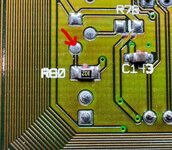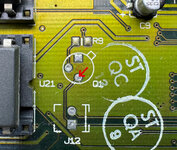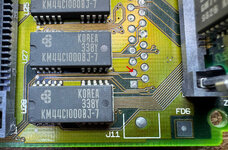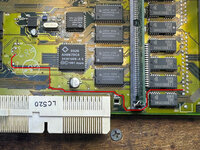Really cool article, thanks for sharing! I definitely can see documentation error leading folks to think the LC 550 and CC II logic boards were substantially different when they actually aren't. I do wonder what controls the different gestalt IDs though?
Macintosh LC 520 = 56
Macintosh LC 550 = 80
Macintosh Color Classic II = 83
The resistors affecting CPU speed would explain 520/550, but LC 550/CC II? Something from the chassis? Video resolution from the sense code?
I believe on these machines the Gestalt is determined from some combination of CPU speed and sense pin detection on the machine's logic board connector. The ROMs are identical between LC 520, LC 550, and Color Classic II and they all use the same System Enabler 403. My LC 550 board inside the Color Classic simply comes up as "Macintosh", but it does show the Color Classic icon. Put the same board in my Mac TV and it shows up as "Macintosh" but with a Hook chassis icon instead.
You'll note in JDW's 67Hz 640x480 mod video that his LC 520 board does identify as an LC 520 inside of the modified Color Classic. But I don't know if he tried that in his machine before the modifications.
Looking at the System Enabler 403 STR# resource the strings for IDs 80 and 83 (LC 550 and CC II) are blank. Of these three machines only the LC 520 has a proper string value at its gestalt. All three of these machines need Enabler 403 to boot, though. A reasonable guess is that the enabler was never updated when the 550/CC II were speed bumped. If I were to edit the names into strings 80 and 83 in it I bet they'd show up correctly.
Apple is not above using jumpers, resistors, or bridges along with the CPU speed to set gestalts—the difference between an LC 475 and Q605 is Jumper J18. Changing chip speeds on other boards will make different gestalts come up as well. http://www.rgaros.nl/gestalt/chapters/ch-19.html
Excellent, thanks for confirming this!Back to the original question from that article my LC 550 board is Rev B (4.5 Volt PRAM battery) so if you confirmed Rev A (3.6 Volt PRAM battery) then neither have R80 populated.





